With the rapid growth of artificial intelligence, generative AI chatbots have become a must-have for businesses looking to improve their customer relationships. These tools, designed to understand and respond naturally and contextually, deliver personalized experiences while cutting operational costs. They complement human interactions with advanced technology, enhancing both efficiency and service quality. Generative AI chatbots, for example, offer 24/7 availability, shorten wait times, and provide precise insights into customer needs. In this article, we’ll explain why these technologies are now essential and how they can revolutionize your customer service and overall business.
A chatbot is a computer program designed to simulate conversations with users. It can answer questions, provide information, or guide users through actions. Traditional chatbots rely on predefined scripts and rules, which often limit their flexibility and ability to respond naturally.
A generative AI chatbot, however, is a much more advanced tool. It uses artificial intelligence models like GPT (Generative Pre-trained Transformers) to generate text autonomously. Unlike traditional chatbots, which are limited to pre-programmed responses, generative AI chatbots offer several key advantages:
they can interpret complex requests and adapt their responses to match the user’s tone and intent.
their ability to generate natural, conversational language creates a more engaging and efficient customer experience.
with each conversation, they improve by enriching their knowledge base.
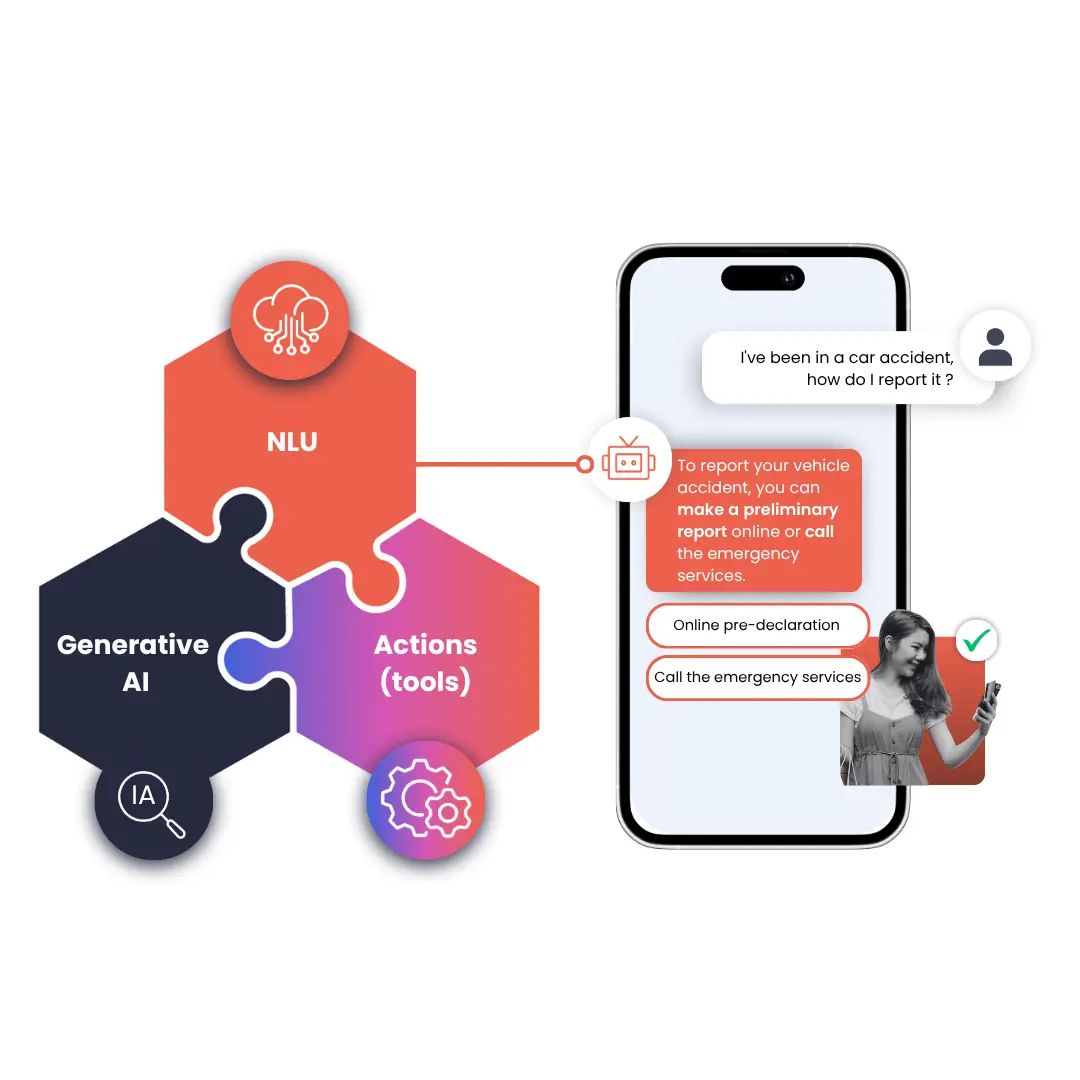
This technology is powered by advanced algorithms capable of analyzing large amounts of data, such as chat histories, user behaviors, and external knowledge. As a result, generative AI chatbots deliver precise, relevant, and real-time responses. They are particularly valuable in industries where customer experience is critical, such as e-commerce, tourism, finance, and public services. Thanks to their flexibility, they can manage a variety of use cases, from automated technical support to personalized recommendations and lead qualification. They also reduce human error, increasing reliability and customer satisfaction.
Our research shows that 71% of businesses view generative AI as a key tool for improving customer experience.
Generative AI chatbots are powered by a range of advanced technologies, including:
used in tools like ChatGPT, it generates creative and context-based responses by analyzing billions of parameters. This technology ensures smooth and natural communication.
combines text generation with document retrieval to deliver accurate, up-to-date answers based on factual data and your internal databases.
these guide conversations in a structured way, helping the chatbot ask the right questions to quickly identify user needs and improve the flow of interactions.
enables chatbots to learn from labeled data, enhancing their ability to understand user intent and provide precise, relevant responses.
NLP allows chatbots to better interpret user messages, understanding subtleties like humor, sarcasm, or typos. It also helps the chatbot pinpoint the user’s intent more effectively.
advanced security protocols ensure sensitive data is protected and compliant with regulations like GDPR.
These technologies often work together with advanced analytics tools like reinforcement learning to improve over time. For example, chatbots monitor user feedback to refine their responses and deliver a better experience. The "LLM as a judge" approach also ensures responses meet ethical and functional standards, maintaining trust and consistency while maximizing user satisfaction. This solution effectively allows for controlling and validating the responses generated by the AI agent, ensuring they comply with pre-established (ethical, functional, etc.) criteria. This approach notably guarantees adherence to pre-existing knowledge, a high resolution rate, and an optimized user satisfaction score.
Thanks to these innovations, generative AI chatbots can adapt to complex systems, growing from simple support tools to virtual advisors capable of handling tasks like resolving disputes or delivering personalized product recommendations.
Want to learn more? Explore the technologies behind generative AI chatbots!
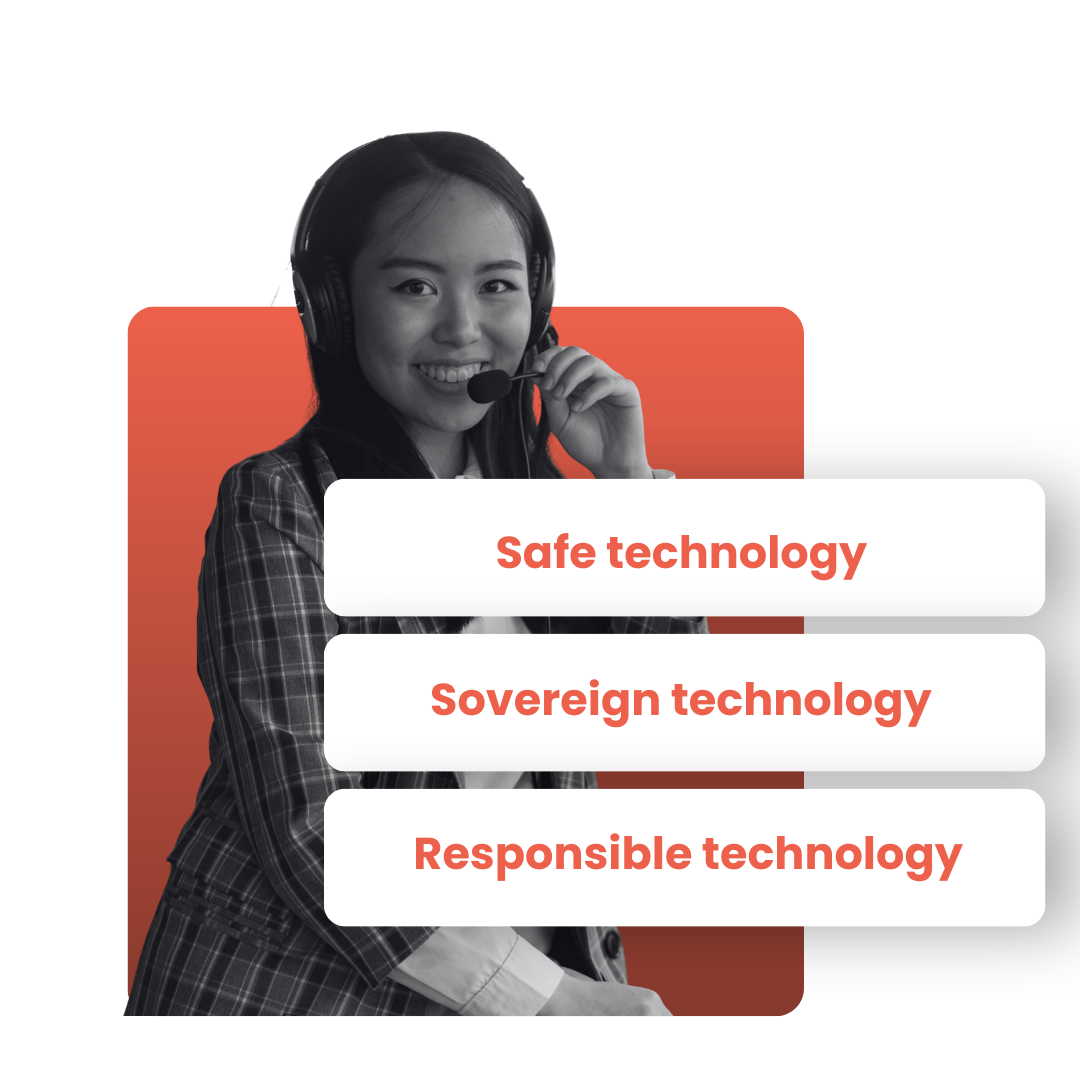
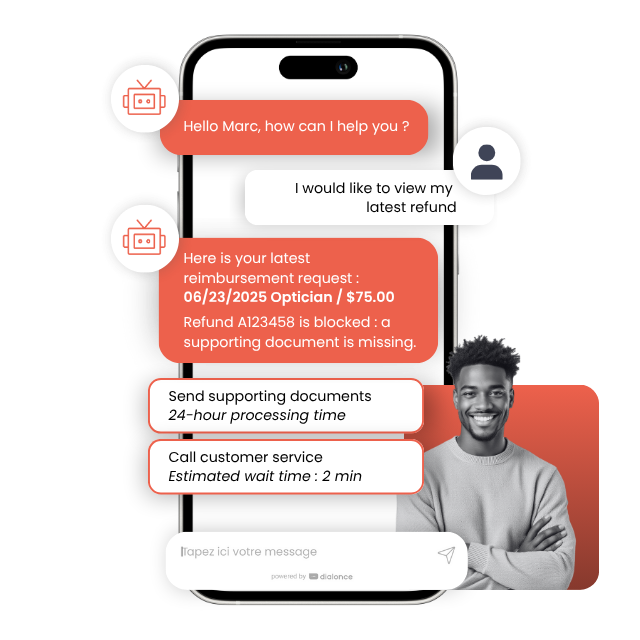
Generative AI chatbots provide instant responses to customer inquiries at any time of the day or night. This enhances customer satisfaction by reducing wait times. They also adapt to a multilingual environment, ensuring seamless interactions for diverse audiences.
By automating routine interactions, businesses can lower customer service expenses and allocate human resources to higher-value tasks. This strategy also significantly reduces the number of incoming calls, easing the burden on contact centers. By cutting operational costs through better resource management and the elimination of repetitive processes, companies can enhance overall productivity.Following the implementation of generative AI chatbots among our clients, we observed an average 20% increase in productivity and a 20% reduction in operational costs.
Chatbots analyze conversation histories and user preferences to deliver personalized recommendations, increasing conversion rates.
By handling repetitive tasks, chatbots free up time for remote customer service agents, allowing them to focus on strategic activities such as managing complex cases.
Generative AI chatbots can interact across multiple platforms, including websites, social media, and mobile apps, ensuring a consistent and accessible presence for customers regardless of the channel used.
"In the future, we expect AI to be able to ask additional questions for a better understanding of the intention (...) for example, choosing a preferred mode of transport to suggest the best route. That's one of the reasons why we went for this type of product, because we think we're just at the beginning!"
Gaëtan Bultez
Customer Service Director RATP
Generative AI chatbots are a great way to enhance customer relationships while automating routine tasks. Although the process might seem challenging, following these key steps can help you create a seamless and personalized customer experience:
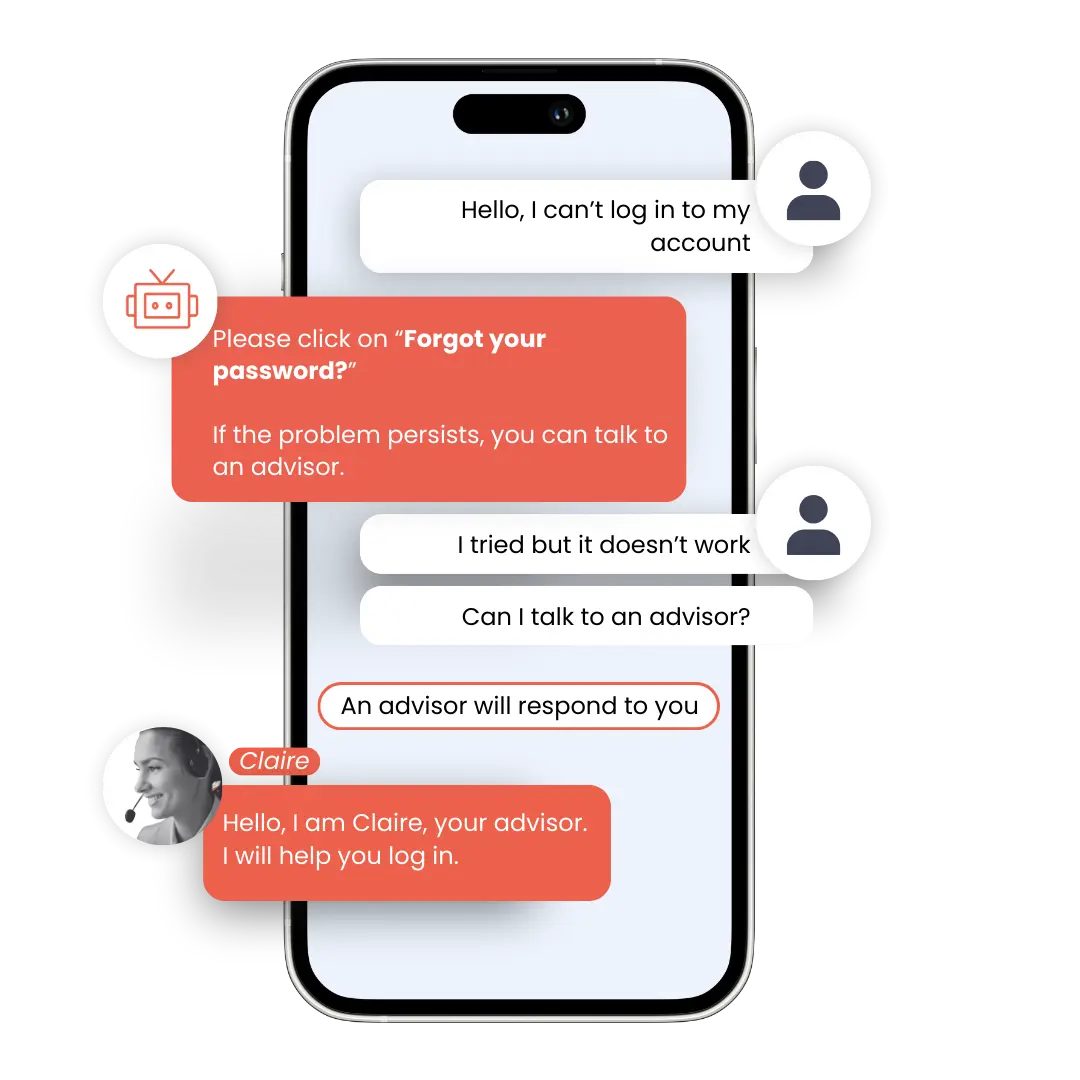
Identify your needs: pinpoint the pain points in your customer service processes.
Choose the right solution: opt for a chatbot that integrates smoothly with your existing systems and supports all your communication channels.
Customize your chatbot: configure it to fit your business, including specific workflows, tone of voice, and automation rules tailored to your needs.
Integrate it with your tools and systems: ensure the chatbot works well with your CRM, CCaaS, and other tools to synchronize data effectively.
Test and optimize: use customer feedback and performance metrics to make necessary improvements.
Monitor and update: regularly analyze performance, explore new optimization opportunities, and update the chatbot to align with technological advancements and changing customer expectations.
Learn more about the benefits of implementing a generative AI chatbot in our article: The impact of AI chatbots on user experience.
Want to know more about deploying a generative AI chatbot? Check out our guide: How to create your own generative AI chatbot without coding.
To make the most of generative AI chatbots, it is essential to follow a few key recommendations to ensure their efficiency and relevance:
Learn more about best practices for training a generative AI chatbot here!
Client case study: How RATP uses generative AI to streamline incoming contacts
Generative AI chatbots are revolutionizing customer interactions by providing innovative, tailored solutions for various industries. Here are some examples of how businesses are leveraging this technology:
In banking, chatbots handle routine requests such as checking balances, reviewing transaction histories, and simulating loans. They also enhance security with fast, accurate authentication and help educate customers about financial products.
In insurance, chatbots assist clients with filing claims, tracking their case progress, and understanding different policies. They can also detect fraud by analyzing suspicious activities and alert customers about unusual transactions.
In tourism, chatbots provide personalized travel recommendations based on user preferences, streamline ticket bookings, and share practical information like schedules and routes, making trip planning easier and more efficient.
In e-commerce, chatbots guide clients throughout their customer journey. They analyze past purchases and preferences to recommend targeted products, increasing sales and improving customer satisfaction.
In transportation, chatbots simplify customer interactions by automating responses to common questions, such as schedule updates or route changes. This reduces the workload for call centers while providing fast, accurate assistance.
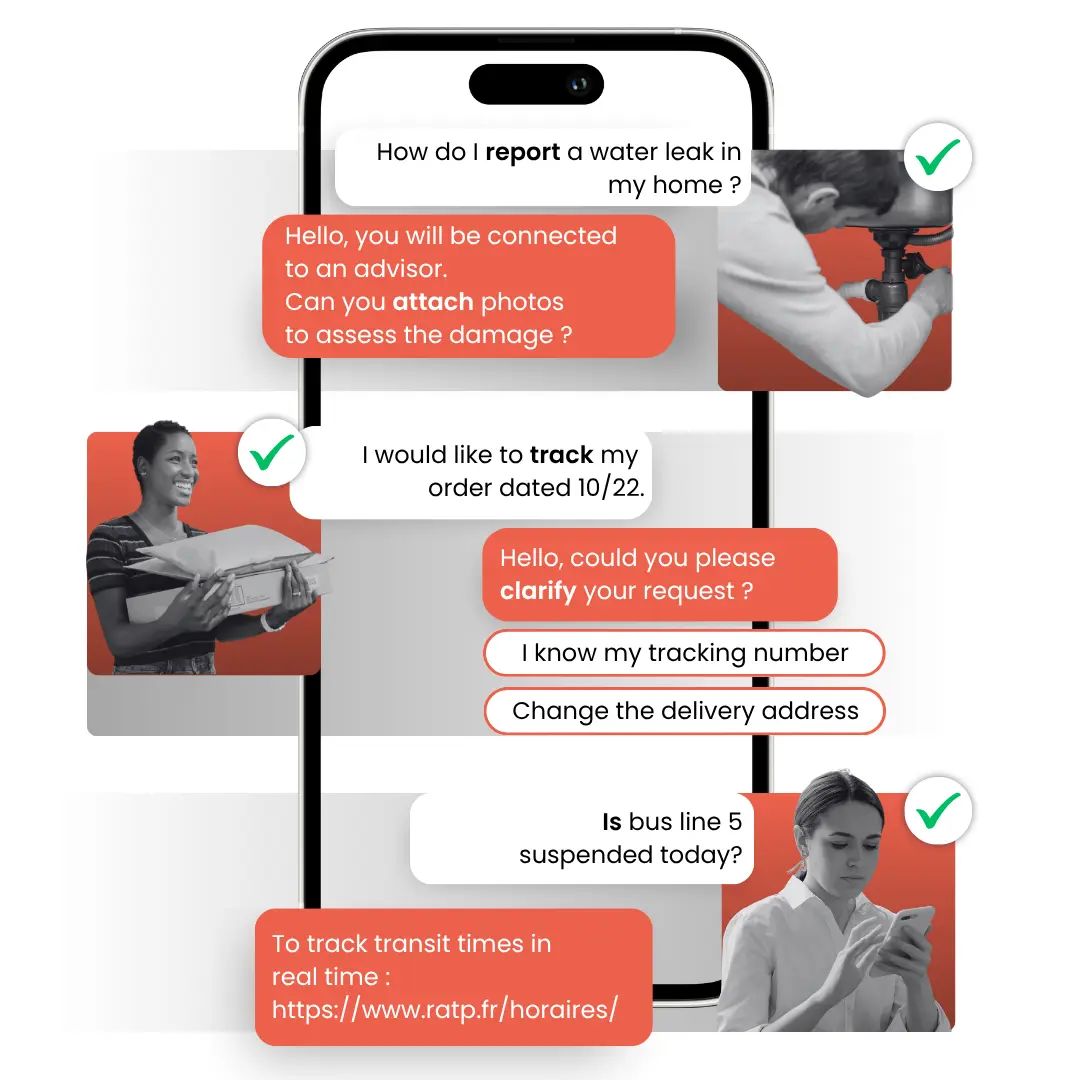
These examples show how generative AI chatbots can be adapted to meet the unique needs of different industries, helping businesses enhance customer experiences and boost operational efficiency.

While generative AI chatbots offer many advantages, they also come with certain challenges. One of the main concerns is managing sensitive data, as poor handling can jeopardize user privacy. To mitigate risks like data breaches or misuse, it’s essential to implement strict security measures. Integrating chatbots into specific industries can also be challenging, requiring customization to ensure they perform effectively. For example, in healthcare, chatbots must comply with strict regulations such as GDPR and HIPAA, which can slow down implementation and increase costs.
Another key challenge is the replacement of human interaction. While chatbots can automate many tasks, some customers still prefer speaking with a human advisor for sensitive or complex issues. Striking the right balance between automation and human support is crucial to maintaining a positive customer experience. Generative AI chatbots can occasionally produce unexpected or inaccurate responses, often referred to as "hallucinations." This unpredictability can impact a company’s reputation. To address this, businesses should implement human oversight systems and regularly update chatbot models to ensure accuracy and reliability.
Despite these challenges, generative AI chatbots offer significant opportunities. With a balanced approach and careful management of their limitations, businesses can harness their potential while minimizing risks.
To successfully tackle challenges and fully leverage the potential of AI, it’s essential to work with the right partner. Choosing a skilled expert equipped with the right tools can make all the difference. Whether it’s integrating AI into your business tools (CRM, CCaaS, etc.) or centralizing dispersed knowledge, customized support ensures optimal personalization and regulatory compliance. When selecting a partner, ensure they have a solid technical foundation to handle integrations with your existing systems. They should also understand the specific needs of your industry and provide ongoing support to optimize your solutions. Look for a partner who adheres to compliance standards such as GDPR, values a collaborative approach, and supports local innovations. With the right partner, you’ll gain high-quality support to streamline your processes, enhance efficiency, and turn your goals into concrete achievements.
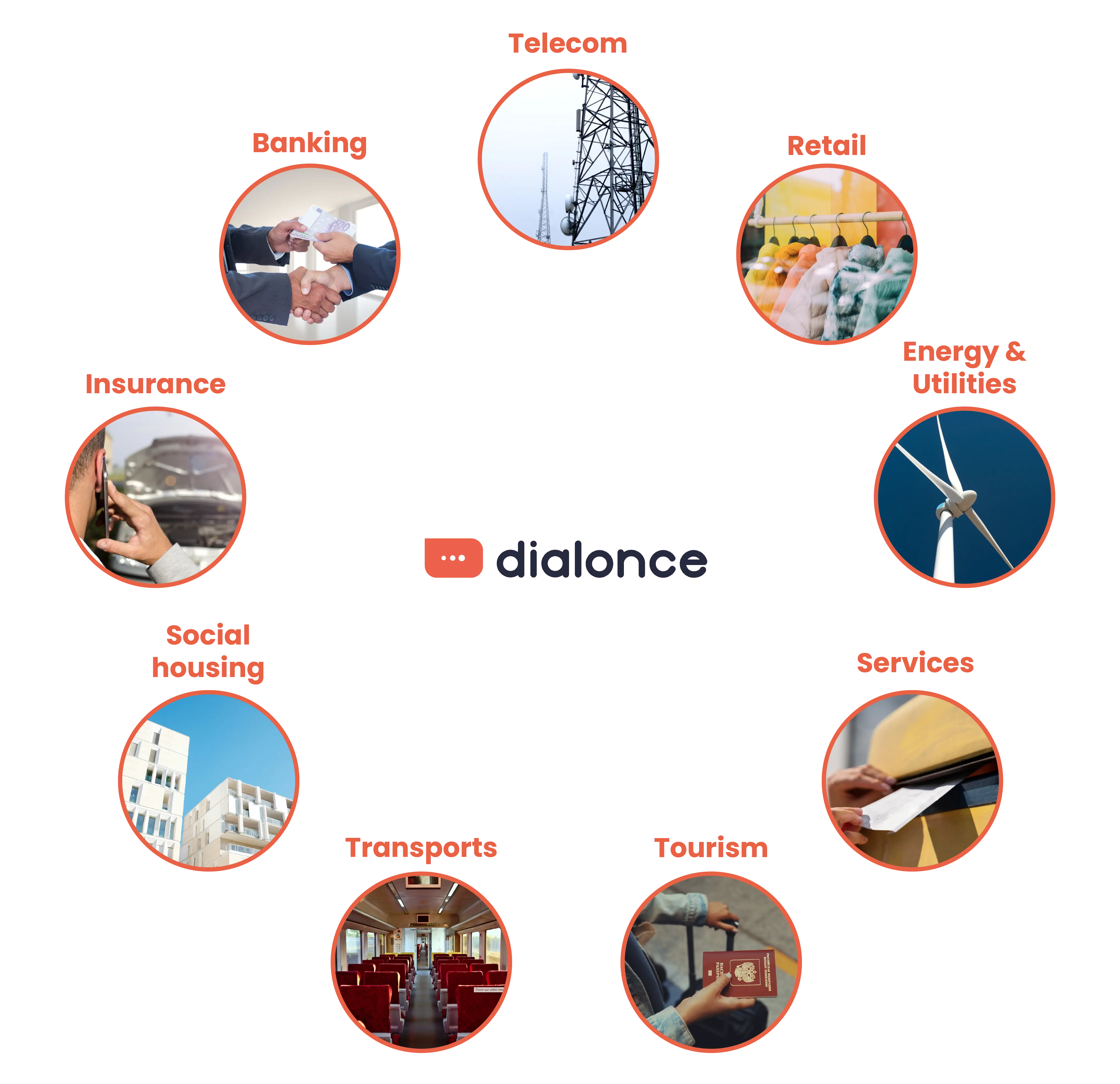
Generative AI chatbots have become indispensable tools for businesses in 2025, particularly for those aiming to enhance customer relationships. With 24/7 availability, personalized experiences, and substantial cost savings, they meet the needs of today’s users while ensuring higher customer satisfaction and a lasting competitive edge. That said, it’s important to address the challenges of implementation, such as protecting sensitive data and monitoring responses to prevent errors or biases. A careful and well-structured approach is essential to fully capitalize on their benefits while minimizing risks.
Looking to the future, chatbots are evolving into intelligent agents. We are entering an era where agent-based AI and multi-agent systems enable more advanced collaboration between machines and humans. These next-generation agents go beyond answering questions, they take initiative, handle complex tasks, and adapt their responses to different environments. This evolution presents vast opportunities for businesses, transforming the way they interact with customers and manage internal processes.
At DialOnce, we know that moving into production in a demanding environment raises essential questions:
Three key factors determine the success of a customer relations project using AI:
For the past 10 years, DialOnce has combined this know-how with a Made in France approach, a guarantee of quality, reliability and proximity.